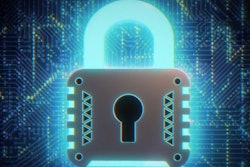
If a few concerned parents have their way, Colorado will be among the first states to ban the sale of smartphones for use by children under the age of 13.
After witnessing what he called a “dramatic, very violent outburst” from one of his sons when taking away his smartphone, a Colorado father (and medical professional) helped create a new lobbying group, called Parents Against Underage Smartphones (PAUS). The group provides links to a wide range of research into the negative effects of smartphone use on children.
The effort appears to be well-meaning and supportive of healthy childhood development. But from my perspective as a media psychologist, informed by research into the uses and effects of communication technology, I see that the group’s concerns fit a common historical pattern of undue alarm over new technology.
Human innovation advances rapidly, but most people’s understanding of new items and capabilities can’t keep up. The result is a sense of moral panic over what we fear will be negative effects on us all, and even on society at large.
As we know from research on sex education, teaching fear and avoidance of something can’t always protect people from negative consequences: Sexual abstinence instruction doesn’t prevent teen pregnancies, but rather increases their frequency.
Moral panics about technology similarly encourage people to withdraw from, rather than engage with and understand, the tools of today and tomorrow. The concerns of parents and groups such as PAUS are valid, but they shouldn’t be dealt with by banning technology. Rather, children and adults should work together to understand new innovations and learn to use them in productive ways.
History of Technology & Panic
One of the earliest examples of a moral panic related to information technology can be found in Socrates’ concerns about writing. In the lecture later, ironically, recorded in writing as “Phaedrus,” the ancient Greek philosopher said written words divorced information from its original spoken source, and said writing things down would irreversibly weaken people’s memories. These may seem quaint worries today, but they were notable critiques in a time where systematic reasoning and oral debate were bellwethers of intelligence.
In the 1790s, the printing of adventure novels raised concerns that children were compulsively reading at the expense of their chores. In the 1920s, people feared that crossword puzzles would contribute to illiteracy. In the 1970s, the video game “Death Race” was labeled by critics as a “murder simulator,” sparking an ongoing debate about whether video games encourage violence.
Social attitudes regarding technology are not usually formed by direct experience. Rather, they most often come from media reports, parents and teachers or Hollywood films. As a result, many of our perceptions of technological threats are based on often-sensationalized anecdotes rather than actual interaction and understanding.
Smartphones may be particularly difficult to evaluate, because one device has so many capabilities – for both good and ill.
Distinguishing Panic from Problem
Skepticism toward technology is important, so we can avoid misusing technology in harmful ways – such as using X-ray machines to figure out what size shoes a person needs to buy. Indeed, philosopher Philippe Verdoux argues that technological advances increase the chances of any one invention destroying us all.
But as worrying as Verdoux’s warning might be, he doesn’t suggest avoiding innovation. Rather, he says the most productive response is to develop a deep understanding of what a given invention’s uses are, including its potential for good and bad consequences.
Moral panics, by contrast, tend to suggest people not use new technologies at all. Abstaining does avoid the costs, but also deprives people of the technology’s benefits. For example, kids and teenagers with smartphones can use them to support their educational efforts. And they can help kids’ social lives, keeping them in touch with friends. Safety also comes into play: Concerned about school shootings, many school districts are reversing bans on smartphone access during school hours, allowing and even encouraging students to use them for emergency communication.
Using Technology Safely
Engaging with new technologies cautiously – and, for children, under adult supervision – is a better approach than banning the unknown. The American Academy of Pediatricianssuggests limiting children’s access to computer, smartphone and TV screens. But rather than banning screen time entirely, the group recommends parents and kids work together to figure how how best to use smartphones and other devices.
By discouraging learning, moral panics fuel misunderstanding and unfamiliarity. Millennials don’t actually understand technology as well as people often assume, which could help explain why they feel less safe online than older adults do. The connection comes from established research about how fear affects social beliefs: Focusing too much on threats without also discussing skills leads to panic rather than progress.
When it comes to smartphones, it would be odd – and wrong – to ban kids from using the digital devices that help define their entire generation. And it wouldn’t help prepare them for jobs and lives in the information-saturated 21st century.






















